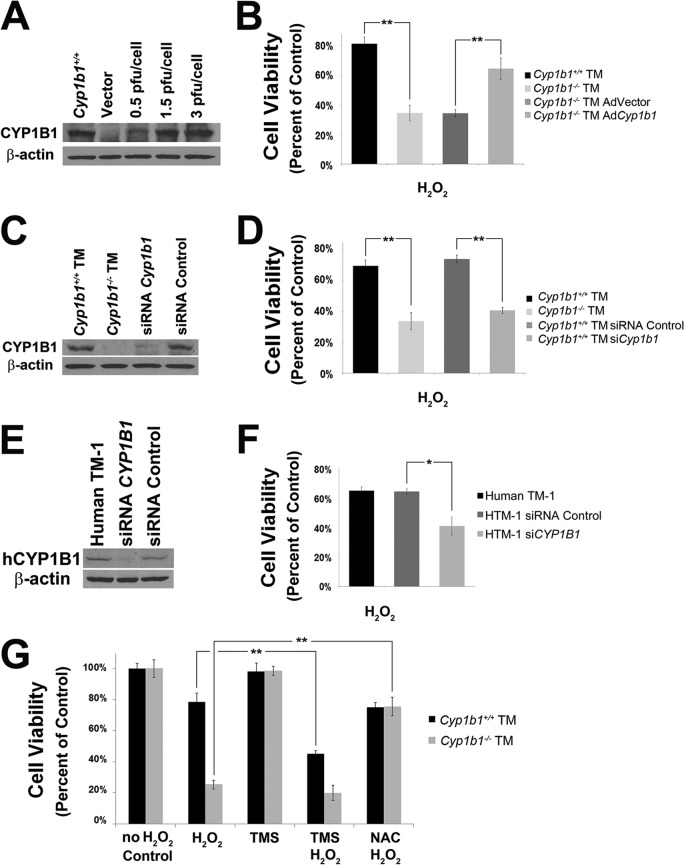Fig 6.
Decreased cell viability of Cyp1b1−/− TM cells. (A) Expression of CYP1B1 in Cyp1b1−/− TM cells expressing the empty vector or Cyp1b1 with various virus inputs. (B) Cyp1b1−/− TM cells were significantly less viable under conditions of oxidative challenge (∗∗, P = 0.0013) (n = 3), which was reversed with restoration of Cyp1b1 expression (∗∗, P = 0.0084) (n = 3). (C) Expression levels of CYP1B1 in Cyp1b1+/+ TM cells expressing a Cyp1b1-specific siRNA or nontargeted control siRNA. (D) Cyp1b1+/+ TM cells were significantly more viable under conditions of oxidative stress (∗∗, P = 0.0028) (n = 3), which was prevented by knockdown of Cyp1b1 (∗∗, P = 0.0002) (n = 3). (E) Expression level of CYP1B1 in human TM-1 cells expressing a CYP1B1-specific siRNA or control siRNA. (F) Human TM-1 cells infected with a human CYP1B1-specific siRNA were significantly less viable than those infected with a control siRNA (∗, P = 0.0117) (n = 3). (G) Cyp1b1+/+ TM cells were more sensitive to oxidative stress in the presence of TMS (∗∗, P = 0.0023) (n = 3). Cyp1b1−/− TM cells were significantly more viable when preincubated with NAC (∗∗, P = 0.0005) (n = 3).

